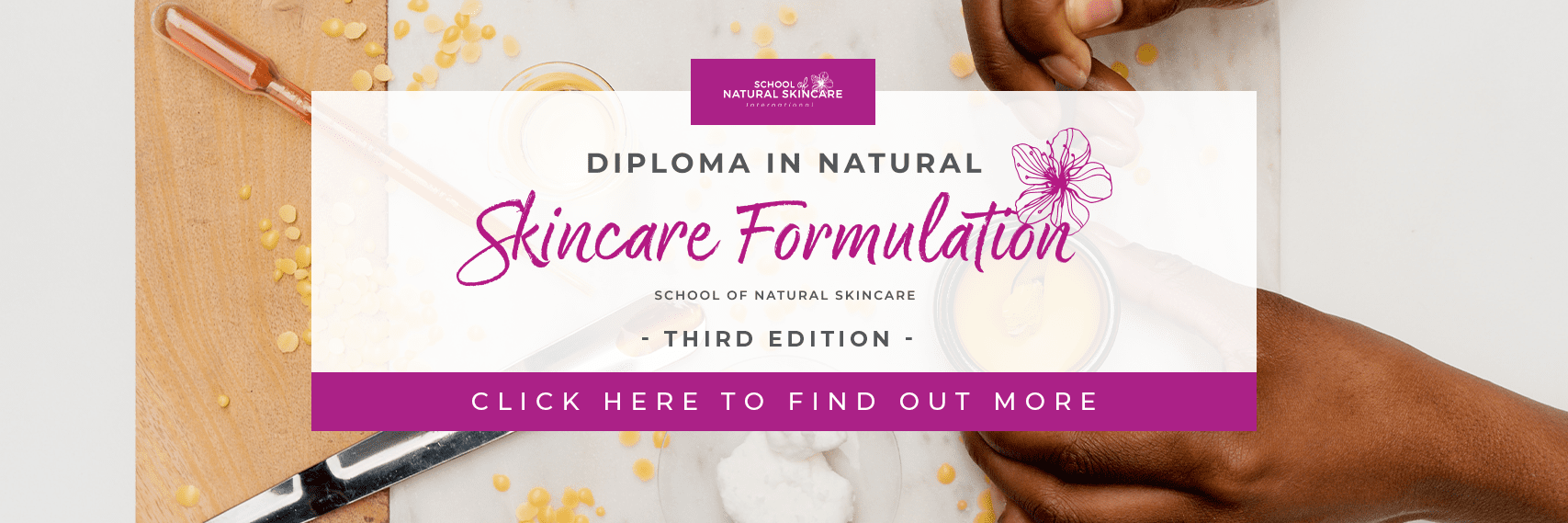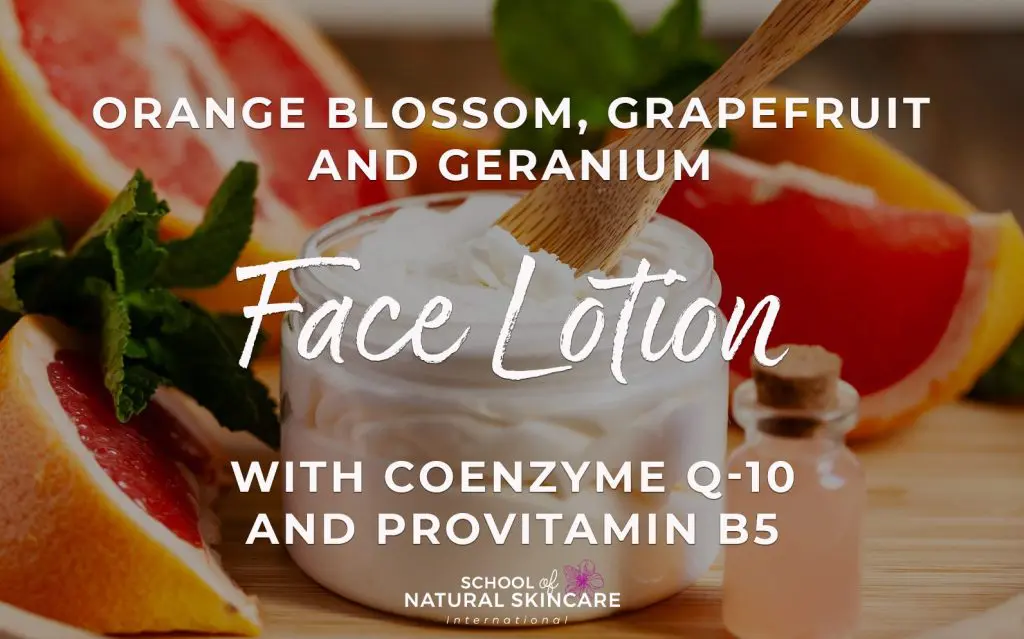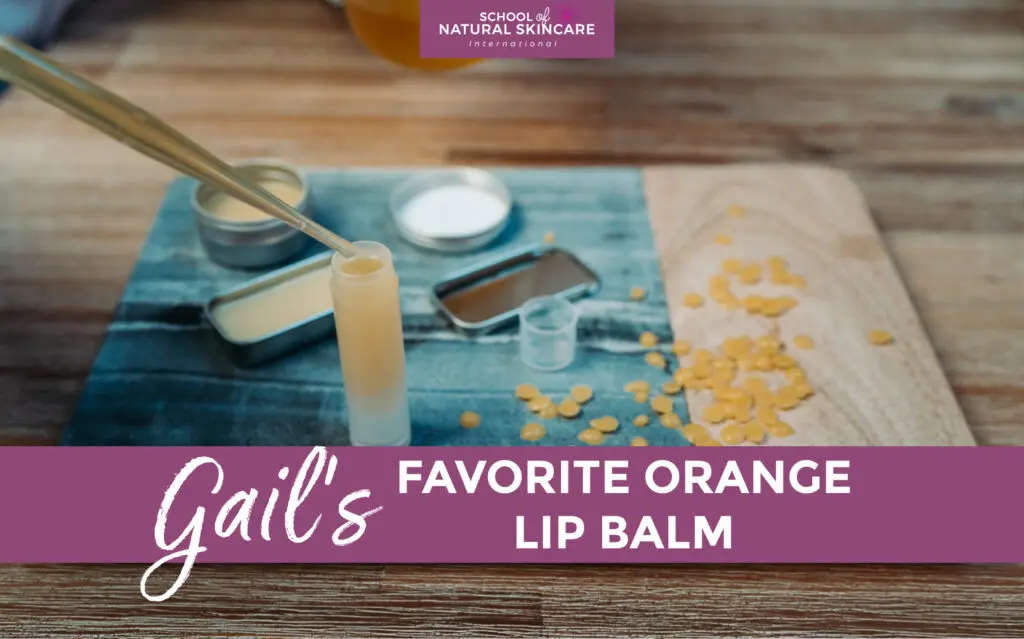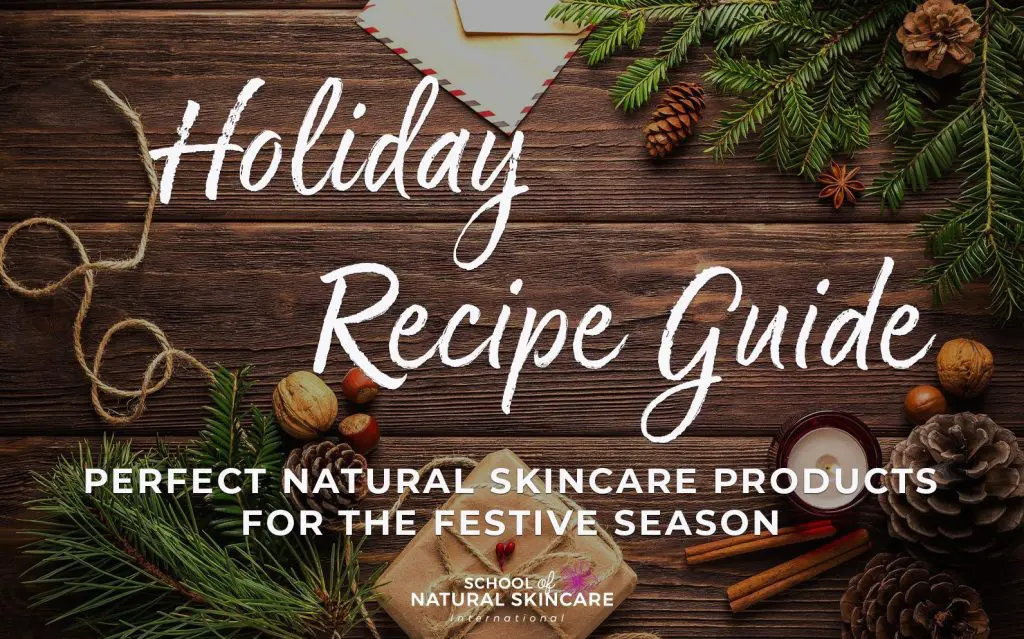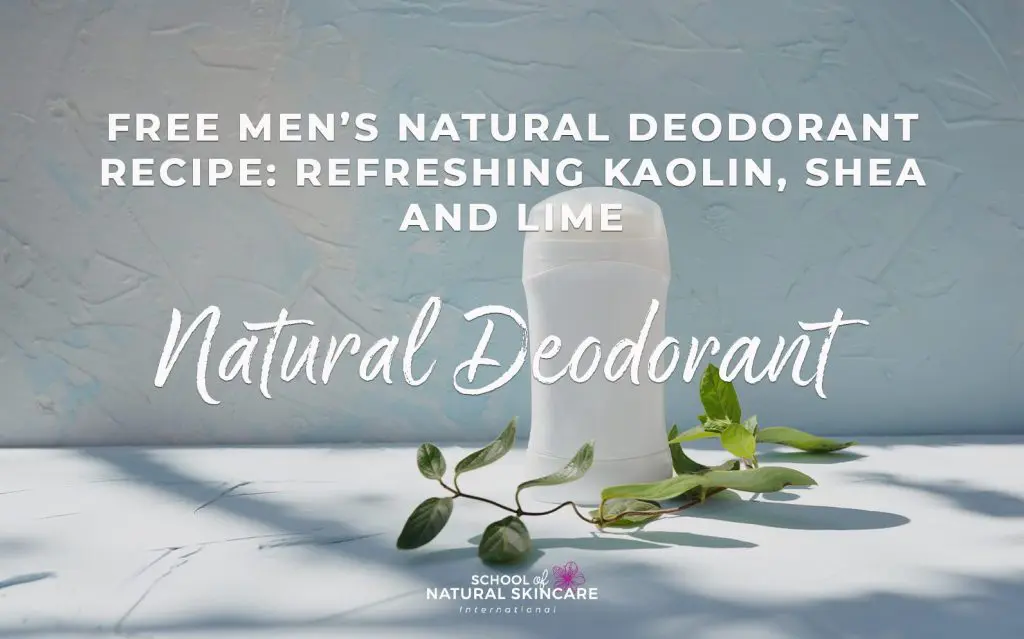A light, natural and organic face lotion recipe
This is a light, easily absorbed lotion that contains ingredients to help keep the skin hydrated, toned and moisturized. It also contains some excellent high-performance anti-aging ingredients plus ingredients that protect against and repair damage from the sun.
Ingredients | properties and benefits
Very rich in antioxidants, with high content of omega 6 and omega 3 fatty acids, so very suitable for dry, mature and sensitive skin. Studies have proven that it absorbs UV rays, but it’s effect as an SPF ingredient was never proven.
Contains very high levels of phytosterols that can help reduce trans-epidermal water loss thereby helping to keep skin moisturized and repair skin damaged by environmental factors including sun damage. Read more about raspberry seed oil here.
Jojoba oil
Balancing, softening, soothing, light and well absorbed, leaves a silky feeling on the skin.
Glycerin
Humectant: draws water into the skin from the atmosphere to increase skin hydration.
Hydrolyzed silk protein
Humectant, emollient and occlusive; draws water into the skin from the atmosphere to increase hydration and softness of skin; smoothes and softens the look of wrinkles/fine lines; provides silky-soft feel.
Neroli (orange blossom) hydrosol
Healing and regenerating; toning; provides light aromatic scent.
Panthenol (Provitamin B5)
Humectant; draws water into the skin from the atmosphere to increase hydration level of skin; maintains skin softness and elasticity.
Coenzyme Q-10
Powerful antioxidant, promotes collagen and elastin synthesis, a great anti-aging ingredient.
Grapefruit essential oil
Toning, helps to clean and cleanse the skin, unclog pores; sweet, fresh, uplifting scent that is softer than you may think. (Should be used at concentrations lower that 4% in leave-on products due to its potential to cause phototoxicity.)
Geranium essential oil
Regulates sebum production, tones and firms; heals and encourages cell renewal; provides light floral scent. (Avoid during first trimester of pregnancy and use in low dilutions thereafter. May irritate sensitive skin.)
Recipe/formula
OIL PHASE
4% emulsifier eg Olivem 1000 (INCI: Cetearyl Olivate, Sorbitan Olivate)
5% raspberry seed oil
2% jojoba oil
1% cetyl alcohol
WATER PHASE
2% glycerin
2% hydrolyzed silk protein
15% aloe vera (liquid)
10% neroli hydrosol
48.2% distilled water
0.2% xanthan gum
COOLING PHASE A
2% panthenol (provitamin B5)
1% preservative*
0.5% grapefruit essential oil
0.5% geranium essential oil
COOLING PHASE B
2% coenzyme Q10
3% jojoba oil
0.1% vitamin E
* As this product contains water, a broad-spectrum preservative is necessary (Vitamin E, rosemary extract and grapefruit seed extract are NOT preservatives). Use your preservative according to the manufacturer’s instructions and adjust the recipe accordingly. We like using Preservative Eco (INCI Benzyl Alcohol, Salicylic Acid, Glycerine, Sorbic Acid) from Aromantic (UK) as it is an Ecocert-certified preservative. This is also sold as Geogard™ ECT available from Voyageur Soap and Candle Company (USA) and Plantaserv M available from New Directions (Australia). Read more about natural preservatives here.
Step-by-step instructions
Use only clean equipment and tools, and always follow good manufacturing practices (GMP) when making any skincare products.
Step 1) Measure all of the oil-phase ingredients into a double-boiler or water bath (according to the recipe above), and bring the temperature to 70 C.
Step 2) Measure all of the water-phase ingredients into a double-boiler or water bath (according to the recipe above). Bring the temperature to 70 C.
Step 3) Pour the oil phase into the water phase. Use an electric stick blender to blend at high shear until the cream has emulsified.
Step 4) Allow to cool, blending periodically. As the cream cools it will thicken.
Step 5) If you are using powdered coenzyme Q10 you’ll need to dissolve this in the jojoba oil before adding it to your cream. That’s why we’ve include 3% jojoba oil in cooling phase B. Add the coenzyme Q10 powder to the jojoba oil and heat it gently (to approximately 50°C) while stirring to dissolve the coenzyme Q10. Alternatively coenzyme Q10 can also be purchased as a liquid, pre-dissolved ingredient.
Step 6) Once the cream is cooled (below 40 C), you may add both cool phases (A and B) and mix well.
Step 7) Test and adjust the pH as required.
Step 8) Distribute into an air-tight pump or jar.
Shelf-life and storage
Store the lotion in an airless pump dispenser for easy and clean dispensing. If preferred, you may use a jar, however, ensure users have clean, dry hands or a spatula to remove the product from the jar.
As this lotion contains a broad-spectrum preservative, the shelf-life is approximately 12 months (perhaps less if stored in a jar where exposed to more contaminates). Label clearly and store in a cool, dry place.
Want to formulate your own products like this one?
Our Diploma in Natural Skincare Formulation teaches you all the skills needed to create your own beautiful, unique, high-performance products.
